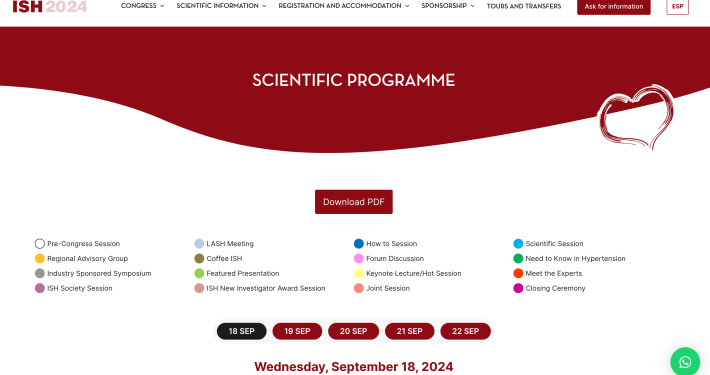24-hour measurement of blood pressure five times more informative of risk of death than conventional clinic blood pressure
In the largest ever study of its kind, 24hr ambulatory blood pressure monitoring was shown to be five times more informative regarding future mortality from cardiovascular and all cause mortality when compared to conventional clinic blood pressure measurement, according to research led by a research consortium from Spain, University of Oxford and University College London.
The study, published in The Lancet, highlights the very strong association between blood pressure and risk of death in almost 60,000 people followed for an average of almost 10 years. The study showed that the average of multiple readings taken over a 24hr period, through the day and night was much more strongly associated with the risk of death over the next 10 years than conventional measurement of blood pressure in the clinic.
The strongest association was with the night-time systolic pressure. The results reinforce the importance of 24hr blood pressure monitoring as a diagnostic tool in the assessment of high blood pressure and the importance, wherever possible, of not relying solely on blood pressure measurements taken in the clinic for the diagnosis and management of hypertension.
It was already known that averaged ambulatory readings were a better predictor of patient outcomes than clinic blood pressure measurement and have been recommended in prior guidelines as a means of confirming the diagnosis of hypertension when clinic blood pressure is elevated, principally to exclude white coat hypertension.
However, prior studies have not had the same statistical power or duration of follow up as this new study, with regard to quantification of just how much stronger the association was between different methods of blood pressure measurement and risk of mortality. This very large study puts a robust figure on the size of the increased informativeness of ambulatory blood pressure measurements.
For the study, 59,124 patients from 223 primary care centres in Spain were followed for almost ten years. The research team compared ambulatory and clinic blood pressure measurements taken at baseline and linked this data with subsequent mortality in the same patients, using data from the Spanish National Registry of deaths.
The study found that the 24hr ambulatory systolic blood pressure average was 4.79 times more informative than clinic systolic blood pressure for the risk of death from all causes, and 4.65 times more informative for risk of cardiovascular deaths.
The research team also found that night-time ambulatory systolic blood pressure was the most informative, six times more informative for death than clinic systolic blood pressure, and nearly twice as informative for death as daytime ambulatory pressure.
The study also had sufficient power to examine the relationship between blood pressure phenotypes and risk of mortality. Both “masked hypertension” (where blood pressure is normal in clinic but raised on ABPM) and “sustained hypertension” (blood pressure raised in clinic and on ABPM) were both associated with a greater risk of death from all causes when compared to those with normal blood in clinic and on ABPM.
In contrast, in an important finding that differs from some previous studies, this study found that ‘white coat hypertension’, (where clinic blood pressure is elevated, but the ambulatory blood pressure is normal), was not associated with a greater risk of death compared to those with a normal blood pressure.
Professor Bryan Williams, the senior author of the paper and Chair of Medicine at UCL, Specialist in Hypertension at UCLH and President of the International Society of Hypertension, said: “We have known for some time that ambulatory measurement of blood pressure over 24hrs is a better means of confirming the diagnosis of hypertension. For the first time we have been able to provide very robust quantification of just how strong the association between ABPM and mortality is and show that the strength of the association between blood pressure and death is very much larger with ABPM, and especially night-time systolic pressure, when compared to the blood pressure measurements made in the usual clinic setting.
“Except where blood pressure is exceptionally high and already associated with evidence of organ damage, wherever possible and available, ambulatory readings, or home blood pressure readings should be taken to confirm a diagnosis of hypertension. It helps avoid treating those with white coat hypertension, which we have shown is not associated with increased risk of death and provides a more accurate diagnosis. The challenge is to better incorporate such measurements into clinical trials to determine whether treatment decisions guided by ABPM versus clinic blood pressure ultimately leads to better outcomes for our patients.”
Read the paper published in The Lancet: Staplin N, et al. Relationship between clinic and ambulatory blood pressure and mortality: an observational cohort study in 59,124 patients














